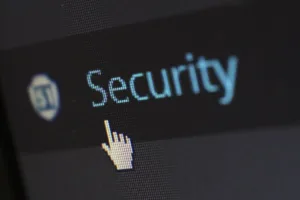
South Korea’s largest telecom operator, SK Telecom, disclosed a malware attack on April 19, 2025, that compromised Universal Subscriber Identity Module (USIM) data for potentially millions of customers. The breach exposed critical identifiers including International Mobile Subscriber Identity (IMSI) numbers, Mobile Station International Subscriber Directory Numbers (MSISDN), and authentication keys1. With SK Telecom holding 48.4% of South Korea’s mobile market share, the incident affects approximately 34 million subscribers2.
Technical Details of the Breach
The attack vector involved malware that infiltrated SK Telecom’s systems at 11 PM KST on April 19, 2025. Security teams detected anomalous activity and immediately isolated affected systems3. Forensic analysis revealed the malware targeted USIM provisioning systems, potentially exposing:
- Network usage patterns
- SMS metadata
- Contact lists synchronization data
Notably, the company confirmed that personally identifiable information (PII) such as names and national IDs remained uncompromised4. The Korea Internet & Security Agency (KISA) and Personal Information Protection Commission (PIPC) were notified within the mandatory 24-hour window under South Korean regulations5.
Threat Analysis and Potential Impacts
The exposed USIM data creates multiple attack scenarios for threat actors. The most immediate risks include SIM-swapping attacks, where attackers port victim phone numbers to malicious devices to bypass multi-factor authentication (MFA)6. Historical data shows telecom breaches often precede financial fraud campaigns, with attackers using intercepted SMS for banking transaction authorization.
SK Telecom has implemented several countermeasures including enhanced USIM swap verification procedures and a free USIM protection service accessible through their security portal7. The company also activated 24/7 monitoring for abnormal authentication attempts across all customer accounts.
| Data Type Exposed | Potential Misuse | SK Telecom Mitigation |
|---|---|---|
| IMSI | Device tracking, location surveillance | Network-level IMSI rotation |
| MSISDN | SIM-swapping, SMS interception | Enhanced port-out verification |
| Authentication keys | Network impersonation | Key rotation initiated |
Regulatory and Industry Context
This incident follows a pattern of increasing telecom sector targeting, with 38% of 2023 cyberattacks directed at telecommunications providers according to industry reports8. South Korea’s Ministry of Science and ICT has formed an emergency response team and initiated on-site inspections at SK Telecom facilities. The company faces potential scrutiny under Article 34 of South Korea’s Personal Information Protection Act, which mandates strict breach notification requirements.
SK Telecom’s parent company SK Group experienced a similar breach in 2011 affecting 35 million users, suggesting possible systemic security challenges9. The current incident occurs amidst heightened global attention on telecom security following recent breaches at NTT and Legends International.
Detection and Mitigation Recommendations
For organizations monitoring potential abuse of the compromised data, the following indicators may prove useful:
- Unusual IMSI changes within South Korean mobile networks
- Sudden spikes in SMS forwarding requests
- Authentication attempts using recycled USIM credentials
SK Telecom customers should immediately enable the company’s USIM protection service and monitor accounts for unauthorized activity. The firm recommends changing all passwords for accounts linked to mobile numbers and enabling additional authentication factors where available.
This breach underscores the critical need for telecom providers to implement robust segmentation between USIM provisioning systems and customer databases. Regular audits of privileged access to authentication systems and continuous monitoring for credential misuse should become standard practice across the industry.
Conclusion
The SK Telecom breach highlights the growing sophistication of attacks targeting core mobile infrastructure. While no confirmed misuse of data has been reported, the exposed USIM information creates long-term risks that may persist beyond initial mitigation efforts. This incident serves as a case study in the challenges of securing legacy telecom systems against modern threats.
Organizations should review their reliance on SMS-based authentication and consider alternative methods for critical systems. The telecom sector must prioritize modernization of authentication frameworks and implement zero-trust principles for subscriber management systems.
References
- “SK Telecom warns customer USIM data exposed in malware attack”, BleepingComputer, April 2025.
- “SK Telecom data breach exposed USIM information”, SecurityAffairs, April 2025.
- “SK Telecom Investigates USIM Data Leak Following Cyberattack”, Business Korea, April 2025.
- “South Korea’s SK Telecom faces scrutiny following suspected SIM card data breach”, MLex, April 2025.
- “SK Telecom says malware incident leaked customer USIM data”, CyberInsider, April 2025.
- “SK Telecom Reports USIM Data Breach in South Korea”, Mobile ID World, April 2025.
- “SK Telecom Reports Suspected User USIM Data Leak in Cyberattack”, Bloomberg Law, April 2025.
- “SK Telecom users’ USIM data leaked in cyberattack”, Korea Times, April 2025.
- “2011 SK Communications Hack”, Korea Communications Commission Report, 2011.






